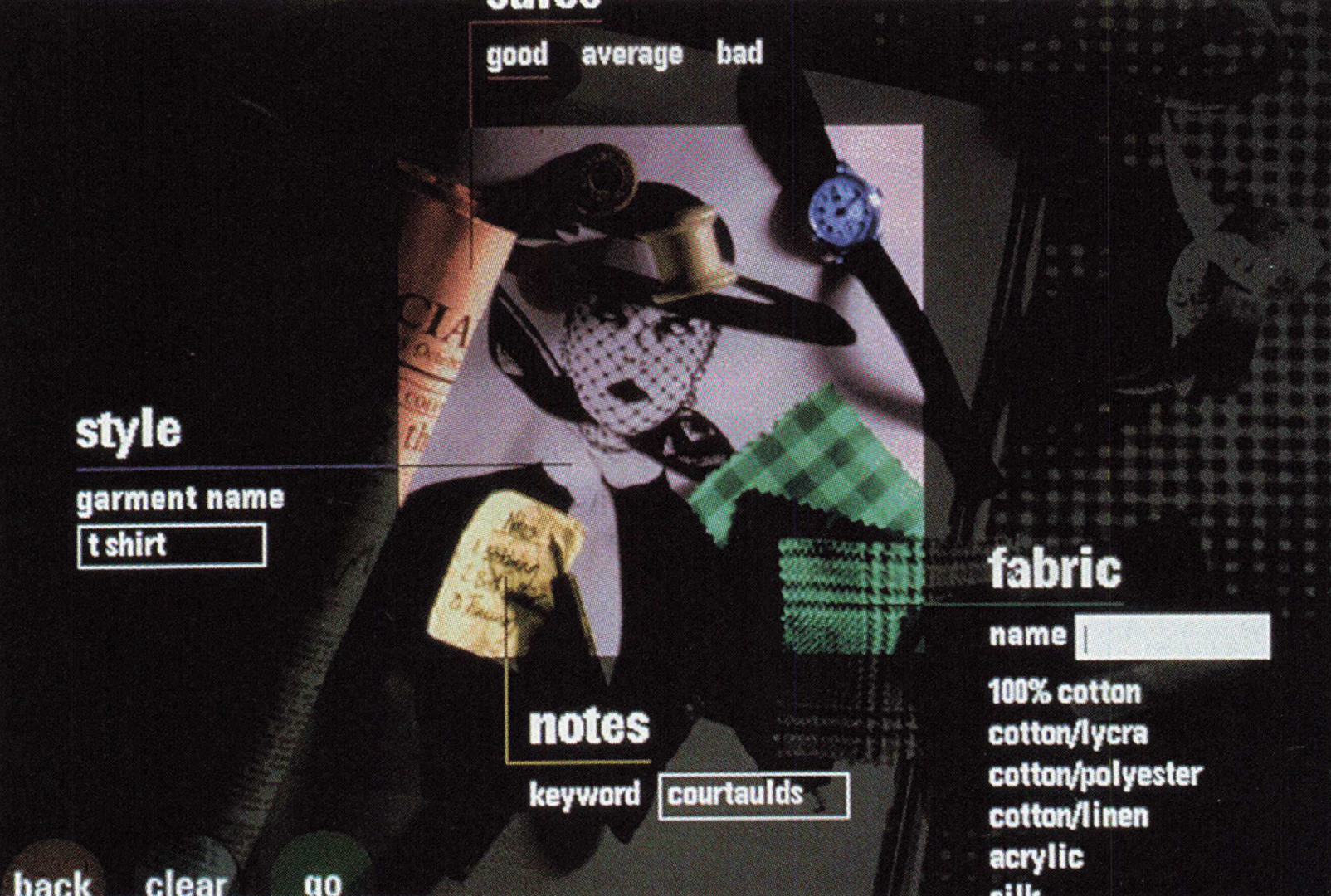“Designing a Visual Database For Designers” by Baker
Conference:
Experience Type(s):
Entry Number: 15
Title:
- Designing a Visual Database For Designers
Program Title:
- Designing Technology
Organizer(s)/Presenter(s):
Collaborator(s):
Project Affiliation:
- Royal College of Art
Description:
- To capture key information about garments during their development life, and thereby form an archive of ‘garment history’
- To make the garment history archive accessible to fashion designers in support of their current design work.
Summary
The project addressed the need of large garment manufacturing and retailing companies to reduce the time required to develop new garments within tight cost and quality constraints. The project had two stages. First was the empirical research into the fashion design environment; the second was the design and prototyping of software tools to aid fashion designers. This example allows fashion designers to draw on past work when designing new garments, incorporates a novel approach to casual data entry and attempts to make the use of computer systems emotionally engaging and memorable.
The Design Problem
A system was designed with two basic purposes:
The Design Process
The design team consisted of an interaction designer, a graphic designer, a cognitive scientist, and a cognitive psychologist. The use of interaction design techniques enabled rapid progression from an initial problem analysis, through design concept sketches of user interaction, to production of artifacts to support users.
Cognitive science methodology was used to increase understanding of the fashion design process that was found to be ‘messy’ as it involved widely differing perceptions of the way garments were designed and developed. However, the research identified the need to support the work of fashion designers by increasing the availability of historical information about previous garment designs.
Conclusion
To make the transition from knowledge generated by research, to a clear design strategy, requires a ‘creative leap.’ Visual and interaction design techniques ensure the leap is made toward efficient and pleasurable human-computer interaction. Factors in the acceptance of the system included the use afforded by familiar and memorable imagery that appeared to outweigh strict legibility issues, and the priority of a visual design solution, which was a key factor in making database technology accessible to novice computer users.





